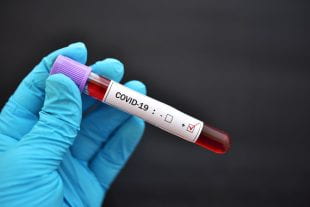NEWS RELEASE
Jeff Falk
713-348-6775
jfalk@rice.edu
Avery Ruxer Franklin
713-348-6327
averyrf@rice.edu
Financial losses from treating COVID-19 patients could devastate health care sector, experts say
HOUSTON – (April 2, 2020) –The federal government’s Coronavirus Aid, Relief and Economic Security Act (CARES) includes hundreds of billions of dollars of funding for the health care sector, but with health care facilities facing unprecedented expenditures, that might not be enough, according to an economics expert at Rice University and a physician at Texas Children’s Hospital.
The cost of caring for COVID-19 patients is predicted to exceed that of typical insurance reimbursement in part because of steps required to prevent the spread of the disease, according to a new blog post by Vivian Ho, the James A. Baker III Institute Chair in Health Economics at Rice, and Dr. Heidi Russell, a physician at Texas Children’s Hospital and associate professor at Baylor College of Medicine.
The legislation adds $100 billion in funds to the Public Health and Social Services Emergency Fund to pay health care providers for expenses or lost revenues attributable to the coronavirus. The funds are only to be used to reimburse for expenses and lost revenues that have not been repaid from other sources. Eligible health care providers comprise for-profit, not-for-profit and public entities as well as Medicare- or Medicaid-enrolled suppliers and providers that deliver diagnoses, testing or care to individuals with possible or actual cases of COVID-19.
Before the outbreak, administrative costs totaled about 8% of all health care spending, the researchers said. “Currently, administrative needs like planning how patients will be tested and where coronavirus patients will be treated as well as allocating limited space and PPE (personal protective equipment) resources are taking up a larger percentage,” they wrote.
Smaller community hospitals, particularly those in rural areas, will be equipped to manage only the mildest cases of COVID-19, the researchers said. Transferring sicker patients to larger centers prepared for the most intensely ill will cause additional strain on already overloaded facilities.
“Patients with underlying illnesses, such as chronic obstructive pulmonary disease and heart disease, are always more complicated and costlier to care for,” the researchers wrote. “These are the majority of patients being hospitalized with COVID-19.”
Given that hospital and physician expenditures represented $1.9 trillion in spending in 2018, $100 billion may be “woefully inadequate” to compensate health care providers for unreimbursed expenses and lost revenue from the pandemic, the researchers said.
“The COVID-19 pandemic is changing the U.S. health care system,” the researchers concluded. “Our communities, medical providers and health care facilities are responding in an unprecedented manner to prevent the system from collapsing.
“The extraordinarily high health care costs resulting from the COVID-19 pandemic will force a new debate regarding how much health care providers should be reimbursed for their services, why U.S health care costs are so high, and what amount taxpayers are willing to accept in order to maintain national health security.”
Ho is also a professor in the Department of Economics at Rice and a professor in the Department of Medicine at Baylor College of Medicine. Her research examines the effects of economic incentives and regulations on the quality and costs of health care.
For more information, contact Avery Franklin, media relations specialist at Rice, at averyrf@rice.edu or 713-348-6327.
-30-
Related materials:
Ho bio: https://economics.rice.edu/faculty/vivian-ho
Follow the Baker Institute via Twitter @BakerInstitute.
Follow Rice News and Media Relations via Twitter @RiceUNews.


